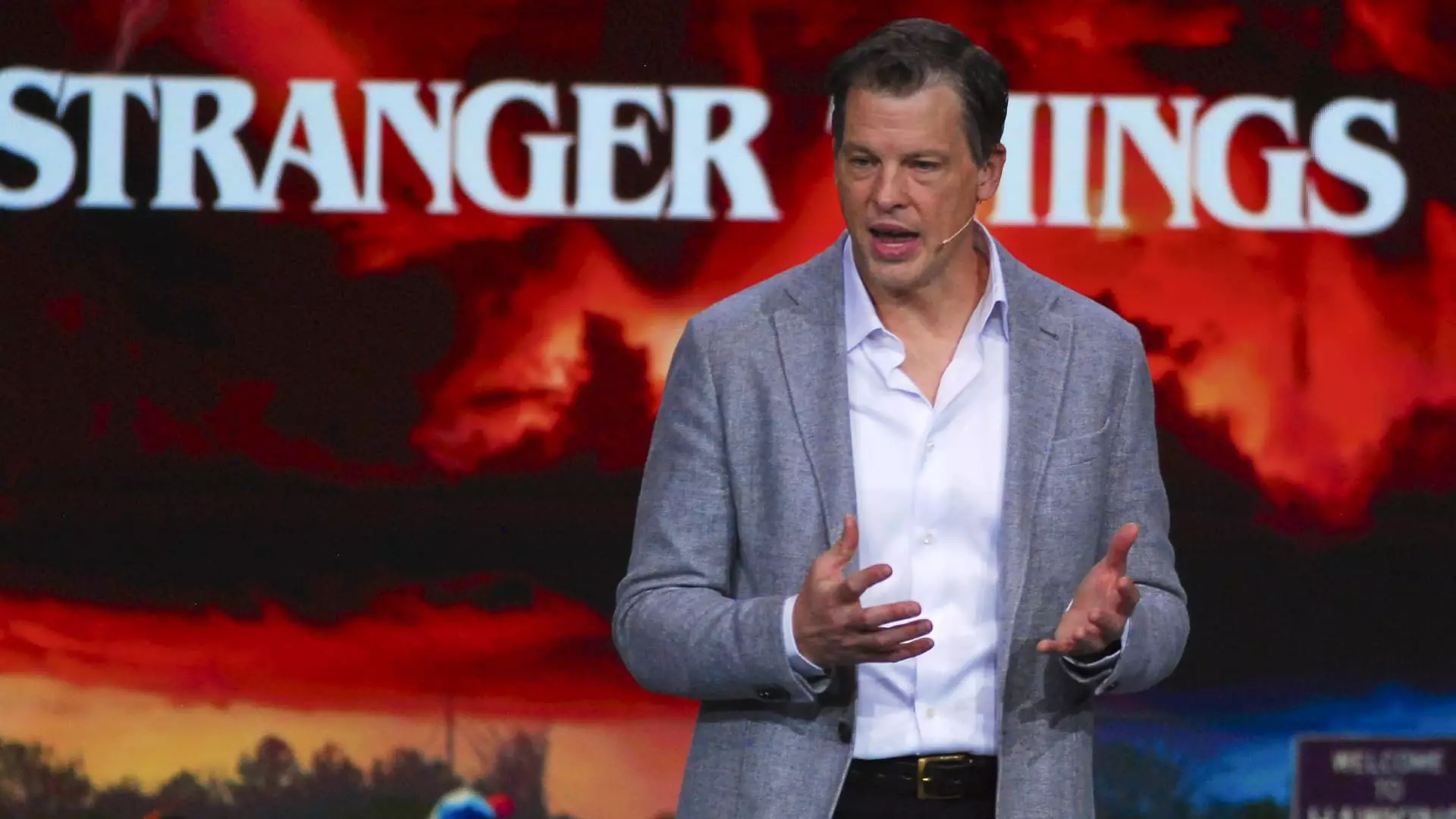Netflix’s recent communication emanates a sense of calm amidst an economic storm, but beneath the surface lies a complexity that cannot be ignored. The company reported an impressive operating margin for the first quarter at 31.7%, significantly exceeding analysts’ expectations. However, the lack of an updated long-term guidance raises eyebrows. If Netflix were truly secure and optimistic about its trajectory, they would have adjusted their projections. The hesitation signals an underlying uncertainty—are they truly “tracking above the mid-point” of their revenue guidance, or are they merely trying to keep investors placated while harboring concerns for the latter half of the year?
Consumer Sentiment: A Cloudy Outlook
The current U.S. consumer sentiment is alarmingly low, hovering near its second-lowest point since 1952. This scenario casts a shadow on Netflix’s confidence. Co-CEO Greg Peters attempts to combat this bleak perspective by asserting the company’s historical resilience during economic downturns; however, this track record cannot blindly guarantee future success. The notion that home entertainment remains a more affordable leisure option amid rising inflation becomes questionable. As households tighten their belts, will Netflix continue to be a priority, or could users opt to sacrifice subscriptions for essentials?
The Churn Dilemma
It’s worth questioning how an economic downturn might influence people’s spending habits, particularly in relation to streaming subscriptions. The company’s strategy to cease quarterly subscriber reports raises concerns about transparency. Are they experiencing churn that they prefer to mask? While Peters insists that retention remains stable and robust, the looming uncertainty in consumer confidence and potential revenue declines leaves one wondering how much faith to place in these assurances. In today’s climate, a subscription might be one of the easier expenses to cut when families are looking to save.
Ad Revenue: A Double-Edged Sword
With the introduction of a lower-priced ad-supported subscription option at $7.99, Netflix is attempting to capture a different segment of the market. Yet, while this initiative may buoy subscriber numbers in the short term by enticing price-sensitive consumers, it could also dilute the brand’s value. Does Netflix aim to be a mass-market platform filled with advertisements or maintain its premium identity? This strategic gamble could further alienate devoted subscribers who despise ads; they might even turn to competitors that adhere to ad-free experiences, such as Apple TV+ or Disney+. The potential for revenue growth through ads may just be the crutch that stabilizes Netflix temporarily.
Riding the Economic Wave
As economic conditions fluctuate, Netflix must brace itself for the repercussions. The flicker of an impending financial squeeze could force the company to reassess its operational strategies beyond mere margins and revenue. Simply put, a lucrative charge in subscriber acquisition could slow, and it might not be enough to hold steadfast in the face of adversity. The response to economic turbulence will likely define the platform’s future trajectory as they weigh their resilience against consumer sentiment amidst a shifting landscape. Without clear visibility into subscriber trends, Netflix risks sailing into uncharted waters, hoping it stays afloat in a tempest of economic change.

Leave a Reply